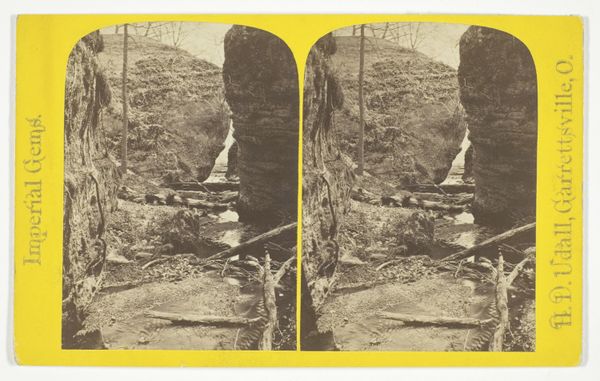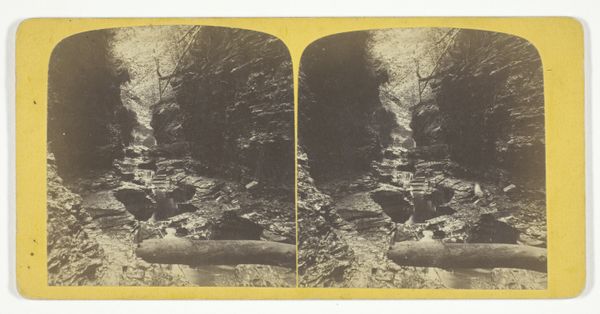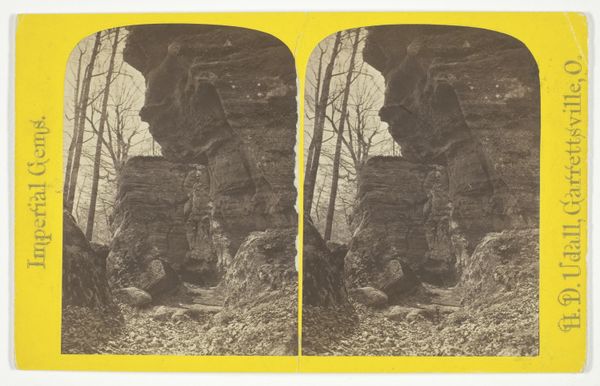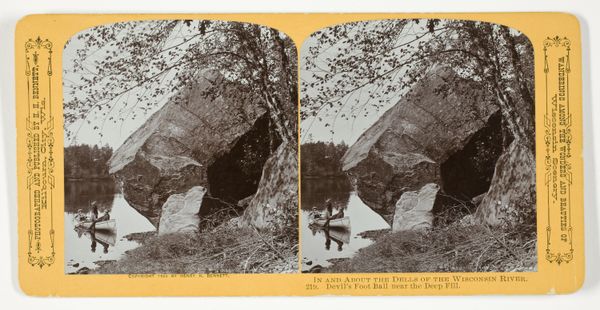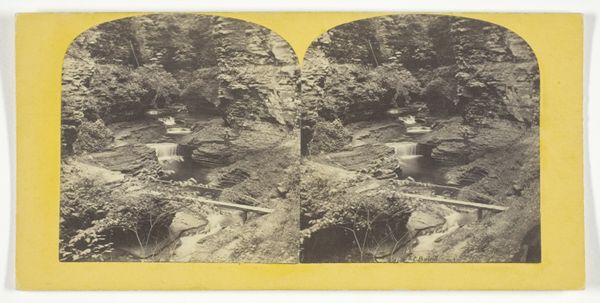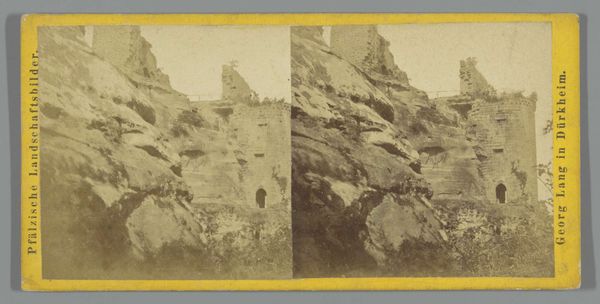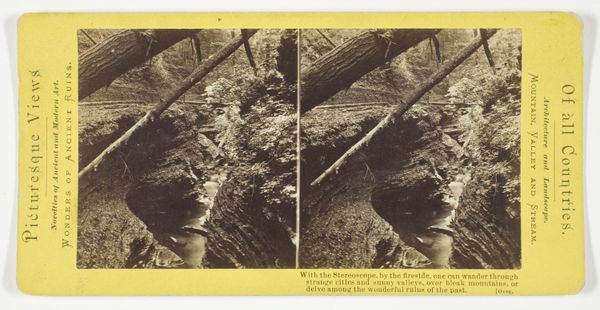
Dimensions: height 85 mm, width 170 mm
Copyright: Rijks Museum: Open Domain
Curator: This striking image is entitled "Waterval in het park van het Monasterio de Piedra" which translates to "Waterfall in the park of the Monasterio de Piedra." It's attributed to M. Judez, and created sometime between 1850 and 1880, employing a gelatin-silver print. What’s your initial reaction? Editor: The immediate feeling is melancholic. The sepia tones wash over a scene of nature, slightly overgrown. The waterfall seems a bit concealed, like a secret element of the landscape. The way it’s framed gives a sense of something untamed being tamed by the photograph itself. Curator: It’s fascinating that you say that. This image, crafted during a time of nascent tourism, depicts a carefully landscaped park. Consider how monasteries historically curated nature for both spiritual reflection and economic reasons. It makes me wonder about the photographer’s choice of vantage point and the relationship between nature, religion and the rising middle class. Editor: That's a great point! How the image then serves as an advertisement, furthering consumption via tourism... I am intrigued by the apparent romanticism in presenting this waterfall. Is it genuinely attempting to present something natural, or staging an "ideal" landscape for consumption and escape from industrial life? Curator: Both perhaps? Romanticism's idealization of nature was often entwined with industrial and urban anxieties. The rise of photography democratized the image and, simultaneously, made pristine landscapes consumable. And we have to recognize that photographic landscapes such as this can influence colonialist thinking about nature as property to be exploited. Editor: Absolutely, there's an echo of control. This ties into understanding the impact of imagery in forming perceptions. A beautiful picture encourages viewers to ignore the underlying issues related to power. This carefully managed nature conceals its own history. Curator: And it prompts a necessary inquiry into who gets to decide how nature is represented and for what purpose. Editor: I am now reflecting on how images like this circulated, impacting ecological awareness, or perhaps reinforcing damaging imperial attitudes towards our environment... Curator: A valuable reminder that landscapes in art, especially during this period, must be approached critically. Editor: Yes. Thanks, now when I look at this, I see how many stories a simple picture can hold.
Comments
No comments
Be the first to comment and join the conversation on the ultimate creative platform.

